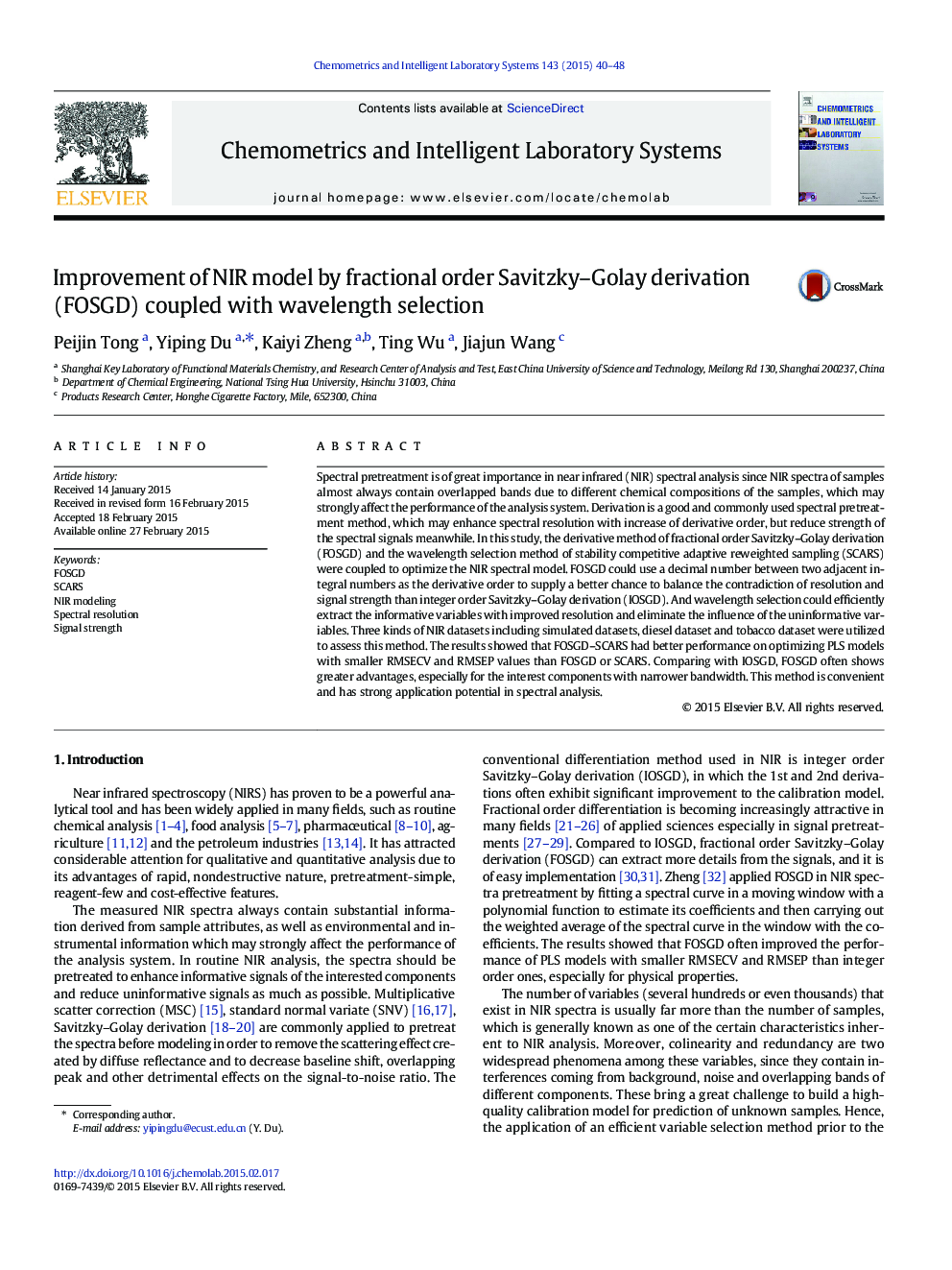| Article ID | Journal | Published Year | Pages | File Type |
|---|---|---|---|---|
| 1180562 | Chemometrics and Intelligent Laboratory Systems | 2015 | 9 Pages |
•Fractional order Savitzky-Golay derivation (FOSGD) and wavelength selection method of SCARS are coupled to improve NIR model.•FOSGD can supply a better chance than integer order derivation to balance the contradiction of resolution and signal strength.•SCARS can extract the informative variables with improved resolution and eliminate the influence of uninformative variables.•Comparing with IOSGD, FOSGD often shows greater advantages, especially for the interest components with narrower band width.
Spectral pretreatment is of great importance in near infrared (NIR) spectral analysis since NIR spectra of samples almost always contain overlapped bands due to different chemical compositions of the samples, which may strongly affect the performance of the analysis system. Derivation is a good and commonly used spectral pretreatment method, which may enhance spectral resolution with increase of derivative order, but reduce strength of the spectral signals meanwhile. In this study, the derivative method of fractional order Savitzky–Golay derivation (FOSGD) and the wavelength selection method of stability competitive adaptive reweighted sampling (SCARS) were coupled to optimize the NIR spectral model. FOSGD could use a decimal number between two adjacent integral numbers as the derivative order to supply a better chance to balance the contradiction of resolution and signal strength than integer order Savitzky–Golay derivation (IOSGD). And wavelength selection could efficiently extract the informative variables with improved resolution and eliminate the influence of the uninformative variables. Three kinds of NIR datasets including simulated datasets, diesel dataset and tobacco dataset were utilized to assess this method. The results showed that FOSGD–SCARS had better performance on optimizing PLS models with smaller RMSECV and RMSEP values than FOSGD or SCARS. Comparing with IOSGD, FOSGD often shows greater advantages, especially for the interest components with narrower bandwidth. This method is convenient and has strong application potential in spectral analysis.
